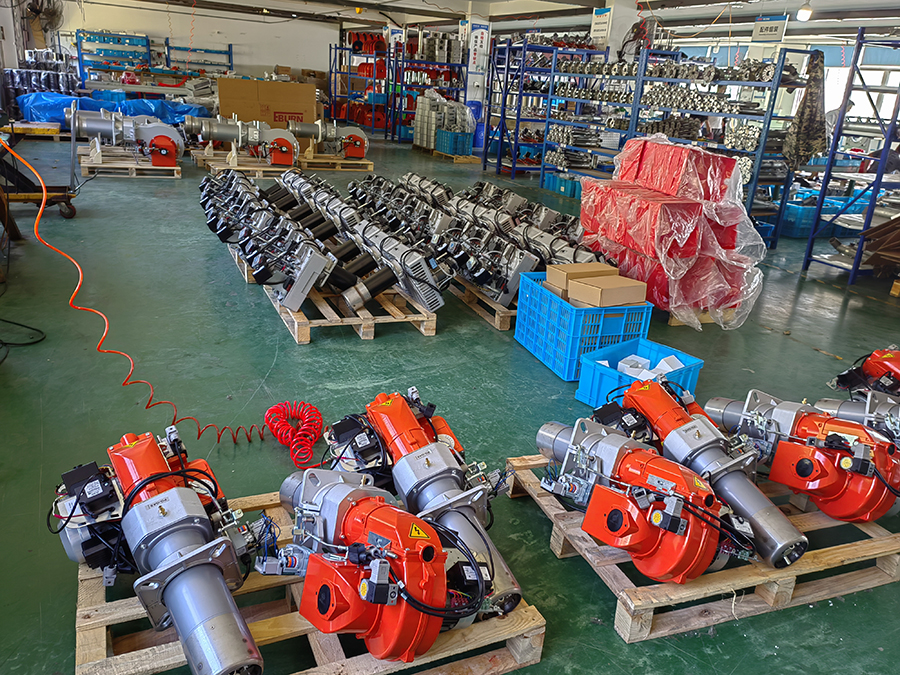Classification of gas burners
Classification of gas burners
1. According to one air separation: diffusion type, atmospheric type, complete premixed type, partial preheated type.
2. According to the air supply method: injection type, blast type, natural induced draft type 3. According to the gas pressure: low pressure, high (medium) pressure
4. According to the flame shape: straight flame, flat flame, adjustable flame
5. According to the flue gas outlet velocity at the fire channel: low speed (<50m/s), high speed (200~300m/s
6. According to the type of gas: artificial gas, natural gas, liquefied petroleum gas, general

A: Diffusion burner
Definition: A burner designed according to the diffusion combustion method
Classification: Power for air supply required for combustion
(1). Natural induced draft type: relying on natural draft force and supplying air by diffusion, it is mostly used for civil one-diffusion burners.
(2). Forced blast type: relying on the blower to supply air, mostly used in industrial-blast burners
B: Naturally induced draft diffuser burner
Definition: The natural draft diffusion burner relies on natural draft or diffusion to supply air, and the gas and air are not premixed before combustion. working principle
The gas enters the tube under a certain pressure, and after escaping through the fire hole, it obtains oxygen from the surrounding air and burns to form a diffusion flame.
Features:
1) Simple structure, easy to manufacture
2) Combustion is stable and will not backfire; easy to ignite and adjust
3) Low-pressure gas (200~400Pa or lower) can be used, and no blast is required, and there is no power consumption.
4) The combustion heat intensity is low, the flame is long, and a large combustion chamber is required.
5) In order to complete the combustion, more excess air must be supplied (a =1.2~1.6); the combustion temperature is low, and the heat loss of exhaust smoke is large.
Application range
Suitable for: occasions where the temperature is required to be uniform, not high, and the flame stable. Such as: small heating boiler igniter, temporary heating equipment. Classification
The gas flow state is divided into: laminar flow and turbulent flow diffusion burner Laminar flow diffusion burner: generally not suitable for natural gas and liquefied petroleum gas - the combustion speed of gas is slow, and it is easy to produce incomplete combustion and soot. Design Calculation
Purpose: To determine the diameter, number, and spacing of fire holes; the gas pressure required before the burner; the basis: momentum theorem, continuity equation, flame stability
C: Blast diffuser burner
The blast burner is generally composed of a distributor, a gas distributor and a fire channel. There are many types, and the commonly used ones are swirl type and flat flow type. working principle
All the air required for gas combustion is supplied by the blower at one time, but the gas and air are not mixed before combustion. The combustion process belongs to diffusion combustion. structure type
Reason for selection: In order to strengthen the combustion process and shorten the flame length, various measures are often used to accelerate the mixing of gas and air
Specific form: sleeve type, swirl type, advection type, etc.
D: Completely premixed burner
Define a burner designed according to the completely premixed combustion method
working principle
Make the gas and air fully pre-mixed, and then burn through the burner.
Structure: mixing device and head
Features:
1. Short flame, high combustion heat intensity and high combustion temperature can reduce the volume of the combustion chamber and easily meet the high temperature process requirements
2. Less excess air will not cause excessive oxidation of directly heated workpieces
3. Easy to burn gas with low calorific value
4. Complete combustion, saving energy.
5. The ejector can be used to inject air—no need for blowing air, saving power. 6. The flame stability is poor and the adjustment range is small.
7. To ensure stable combustion, the calorific value and density of gas should be stable
8. In order to prevent tempering, the head structure is relatively complicated and bulky.
9. The flow rate at the outlet of the flame hole increases obviously—the noise is loud.